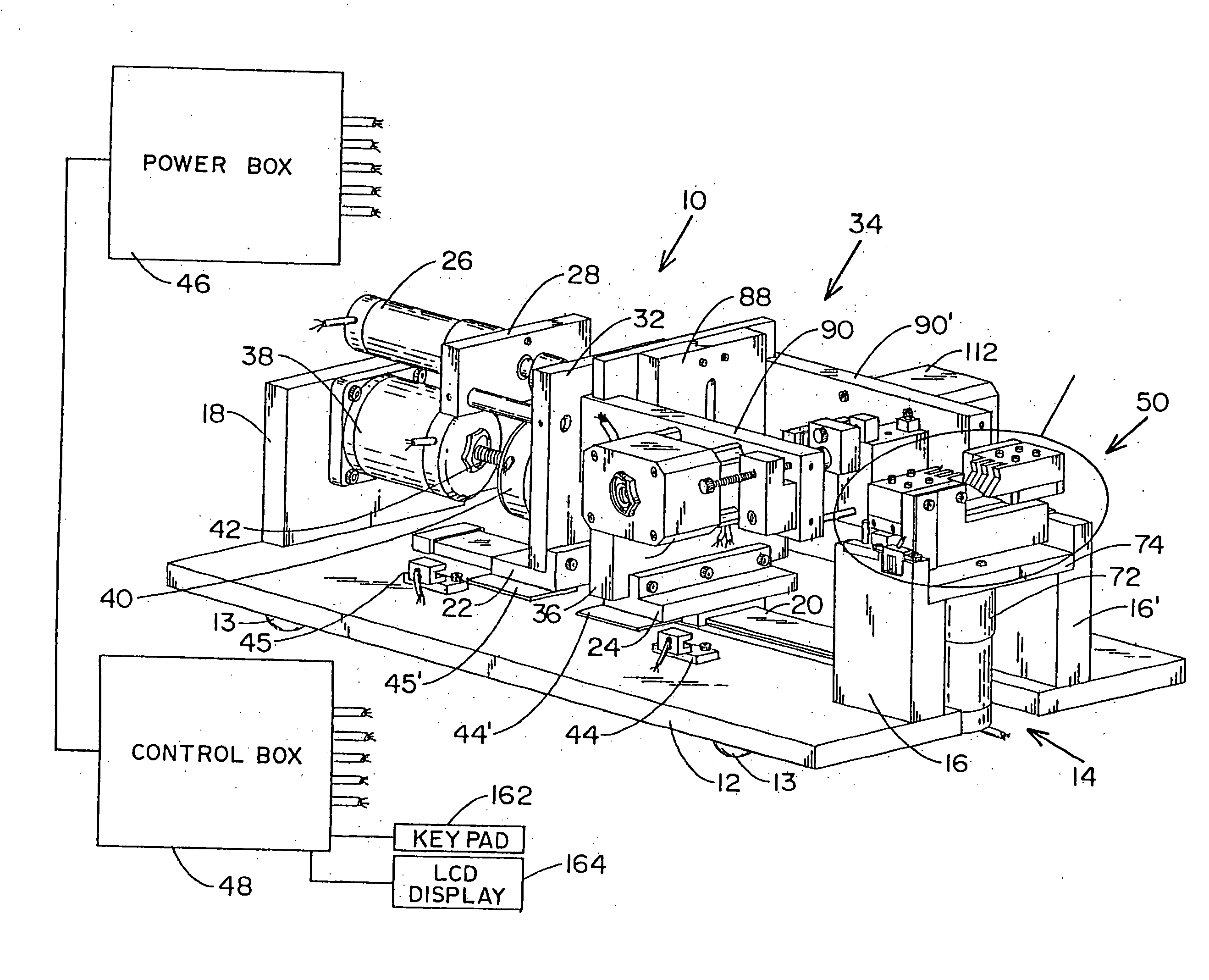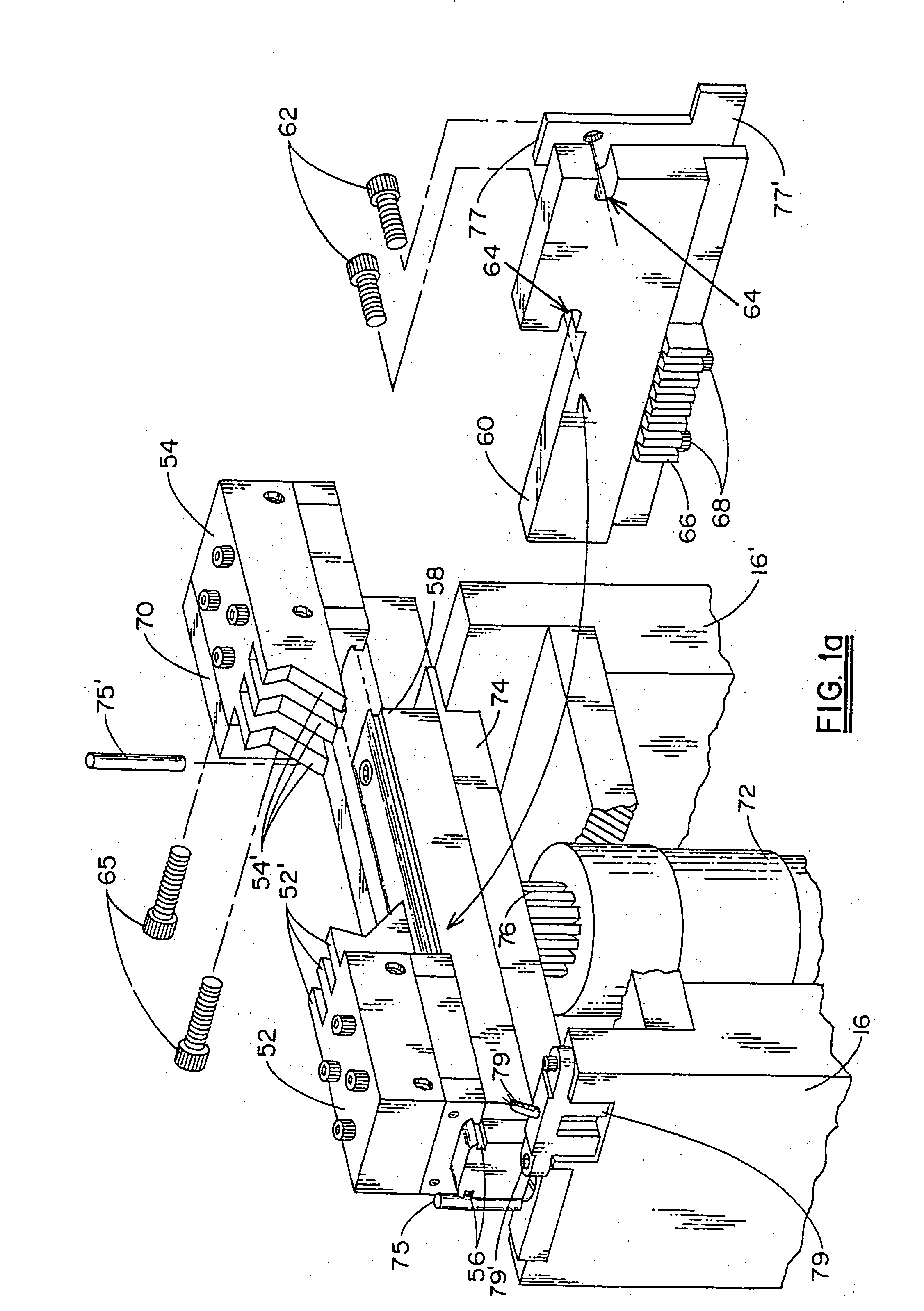Orbiting blade coaxial cable cutter/stripper
a coaxial cable cutter and cutting blade technology, applied in the direction of electrical cable installation, apparatus for removing/armouring cables, electrical equipment, etc., can solve the problems of deterioration of centering accuracy and subsequent degradation, and achieve the effect of facilitating blade replacement, and reducing the “whip” of the wire end
- Summary
- Abstract
- Description
- Claims
- Application Information
AI Technical Summary
Benefits of technology
Problems solved by technology
Method used
Image
Examples
Embodiment Construction
[0029] The apparatus of the invention, in the illustrated embodiment, is denoted generally by reference numeral 10. Apparatus 10 would, of course, be enclosed in an appropriate housing to prevent manual contact with moving parts, provide for insertion and withdrawal of workpieces, scrap removal, etc. However, since the design of the housing plays no part in the present invention, it is omitted from the drawings. The fixed frame of the apparatus includes horizontal plate 12, resting on feet 13 and having open, cutout area 14 at what is considered the front end of the apparatus, front, vertical supports 16, 16′ on opposite sides of open area 14, and rear, vertical support 18. Guide ways 20 are fixedly attached to the upper surface of plate 12 for sliding engagement by first and second carriages 22 and 24, respectively. For optimum rigidity and stability, the carriages are mounted to the ways via recirculating, linear, ball bearings pre-loaded to essentially remove play. DC motor 26 is...
PUM
| Property | Measurement | Unit |
|---|---|---|
| movement | aaaaa | aaaaa |
| distances | aaaaa | aaaaa |
| electrically connected | aaaaa | aaaaa |
Abstract
Description
Claims
Application Information
 Login to View More
Login to View More - R&D
- Intellectual Property
- Life Sciences
- Materials
- Tech Scout
- Unparalleled Data Quality
- Higher Quality Content
- 60% Fewer Hallucinations
Browse by: Latest US Patents, China's latest patents, Technical Efficacy Thesaurus, Application Domain, Technology Topic, Popular Technical Reports.
© 2025 PatSnap. All rights reserved.Legal|Privacy policy|Modern Slavery Act Transparency Statement|Sitemap|About US| Contact US: help@patsnap.com



